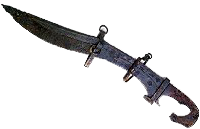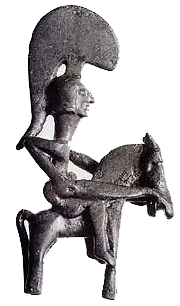



For many centuries, Iberian language was spoken in the territory where we find today the Catalan Countries and we can still find its footprints everywhere: from the names of “comarcas” (regions) that maintain their names from Iberian tribes to the tools used in agriculture, traditional celebrations or religious places. Iberian culture is our direct substrate.
From the beginning of Iberian culture we have writing: the most ancient text written in Iberian language dates from the 6th century BC and is from Ullastret (Empordà, Girona).
More modern texts are from the 1st century AD: graffiti in Guissona and a stela in Requena, 2nd century AD.
It is interesting that the oldest texts, 5th century BC, used a dual system, which we can find until 3rd–2nd centuries BC. It seems that afterwards the differentiation between voiceless and voiced consonants is lost.
Period and historical facts |
Writing situation |
|
|
Although there are over 2,000 texts in Iberian writing in all sorts of media, and script and Latin alphabet phonetic equivalents are more or less known, the language represented by the Iberian writing has not yet been deciphered. Noting the large number of texts that there are, we ask ourselves the following questions:
To try to answer these questions, a database can be created and inscriptions introduced, trying to have the largest number of media, languages, alphabets and covering the entire chronology from the 6th-1st centuries BC. You can see a full corpus on the page corpus of inscriptions or, for example, a brief list of inscriptions in the following report: Exemple inscripcions.html, in Catalan
The results are displayed in a pivot table. You can click on the link to access the table (file in Catalan language). You can see the data by choosing the options by periods (above –Cronologia-), by media materials (right –Suport-) or by alphabet type (below –Alfabet-) and see the variables of each option: Exemple supports i llenguatges.xls, in Catalan
 |
 |
 |
Webmistress: Núria Delgado.